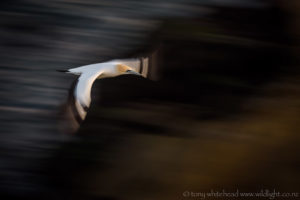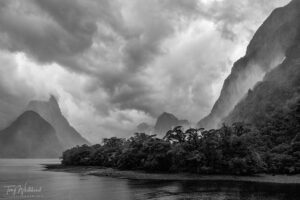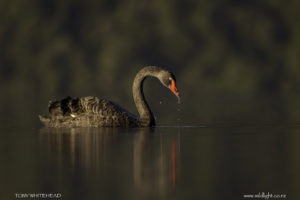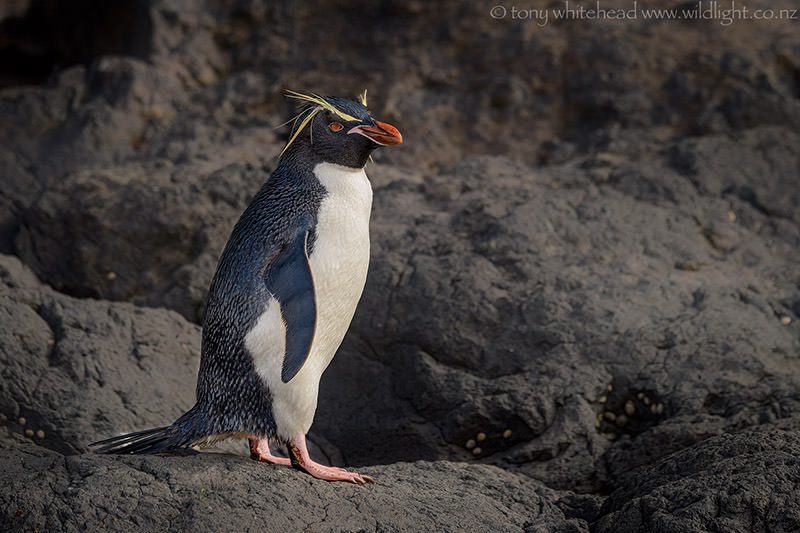
Our visit to Musgrave Inlet on Auckland Island was my first opportunity to see Eastern Rockhopper Penguins. Until relatively recently Rockhopper Penguins were divided into Southern Rockhoppers (Eudyptes chrysocome) breeding on islands off South America (including Falklands) and Northern Rockhopper (Eudyptes mosleyi) which inhabit islands in the Atlantic and Indian Oceans (Gough, Tristan da Cunha, Amsterdam, St. Paul). The Rockhoppers from the New Zealand Subantarctics and Macquarie were considered Southern Rockhoppers but have been classified into a separate species (Eudyptes filholi) and named as Eastern Rockhoppers with the South American birds as Western Rockhoppers although the Southern Rockhopper name is still used for them as well.
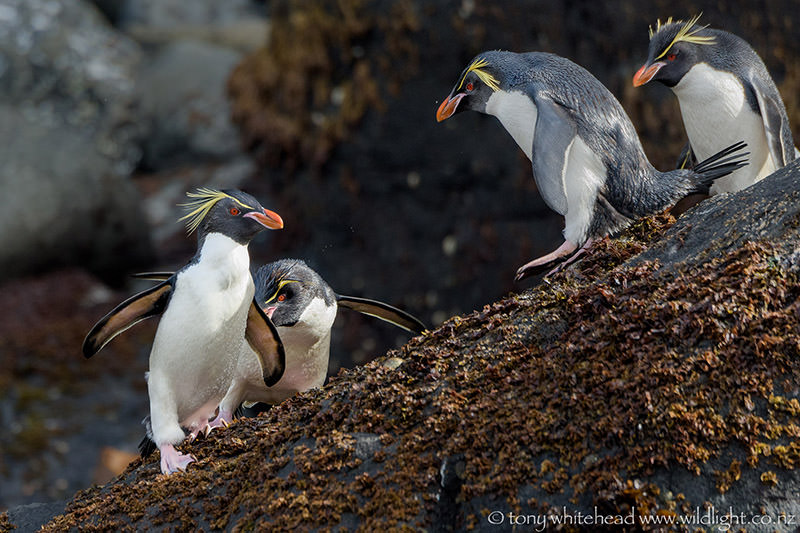
They are the smallest of the crested penguins and feisty little birds that are great photographic subjects with their flamboyant yellow crests. They are under significant threat, classified as nationally critical, having suffered huge population declines. The Campbell Island population plummeted an estimated 94% from 800 000 breeding pairs in 1942 to 51 500 pairs in 1985. Other populations have also suffered significant declines with reduced food availability resulting from climate change thought to be the main factor. Birds having to range further and further from breeding sites to collect food has limited their breeding success, a similar scenario to that contributing to reduced breeding success for New Zealand Sea Lions as previously discussed.
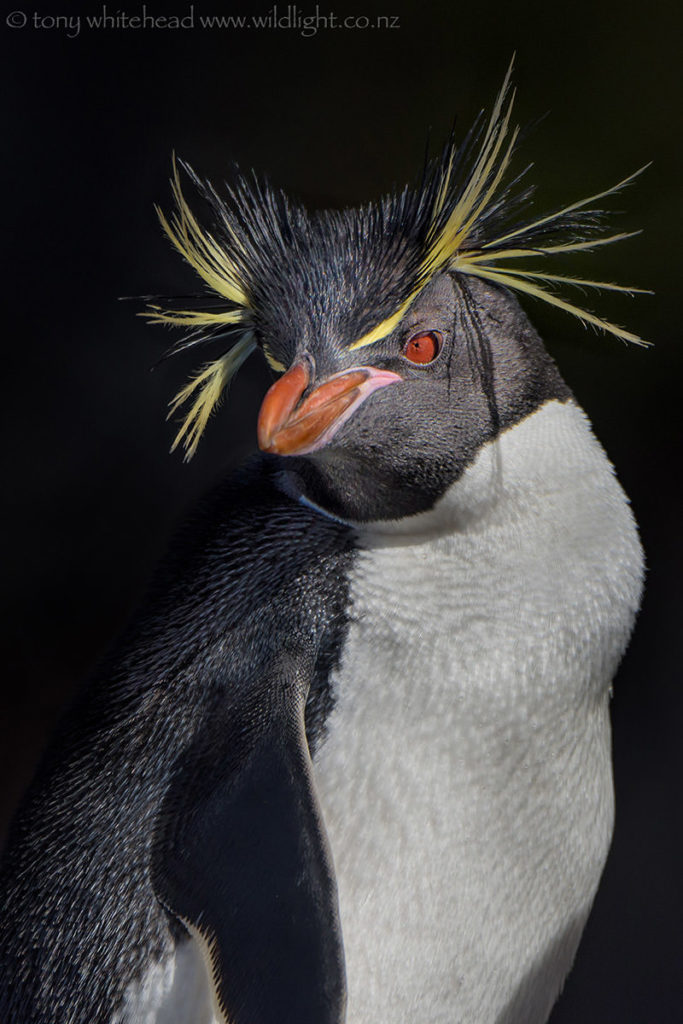
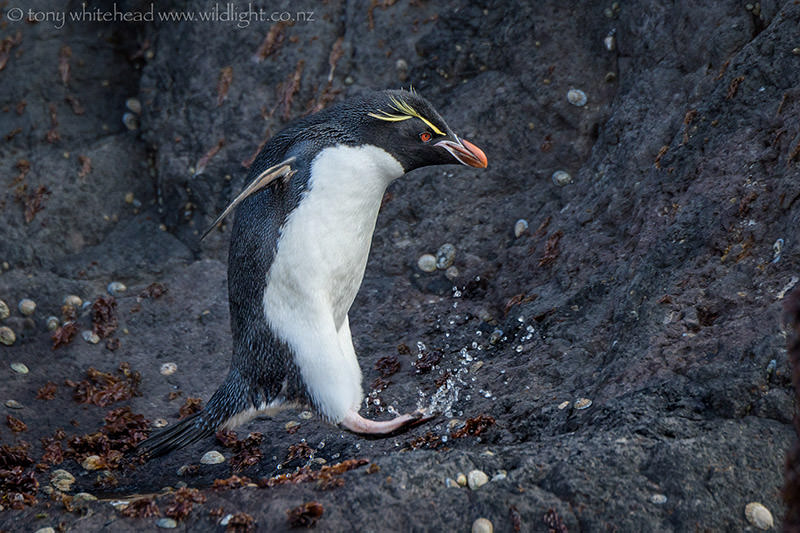
Eastern Rockhopper Penguins are monogamous and share incubation and chick care. 2 egg clutches are laid in early November with no re-laying if the clutch is lost and no double brooding. The second egg laid is larger and usually the successful chick hatches from this egg before the earlier laid but later hatching egg. Occasionally both chicks will survive to fledging. The male fasts for approximately 34 days while covering the final incubation shift and then guarding the chick(s) while the female forages for food returning to feed the young. When about 24 days old the downy chicks form creches and the males join the females in provisioning trips until the chick fledges at about 65 days. About a month later the adults return to the colony to moult over 3-4 weeks. The month is required for intensive feeding to build up fat stores to see them through the moult. Like all penguins they undergo an annual catastrophic moult replacing all their feathers at once. Most birds moult a few feathers at a time but because penguin plumage is essential for waterproofing and warmth they need to remain fasting on land while replacing their entire complement of feathers. The Rockhoppers moult in April so there were none in that phase during our visit. This next photo shows a moulting Chinstrap Penguin that I photographed on Livingston Island during our trip to Antarctica.
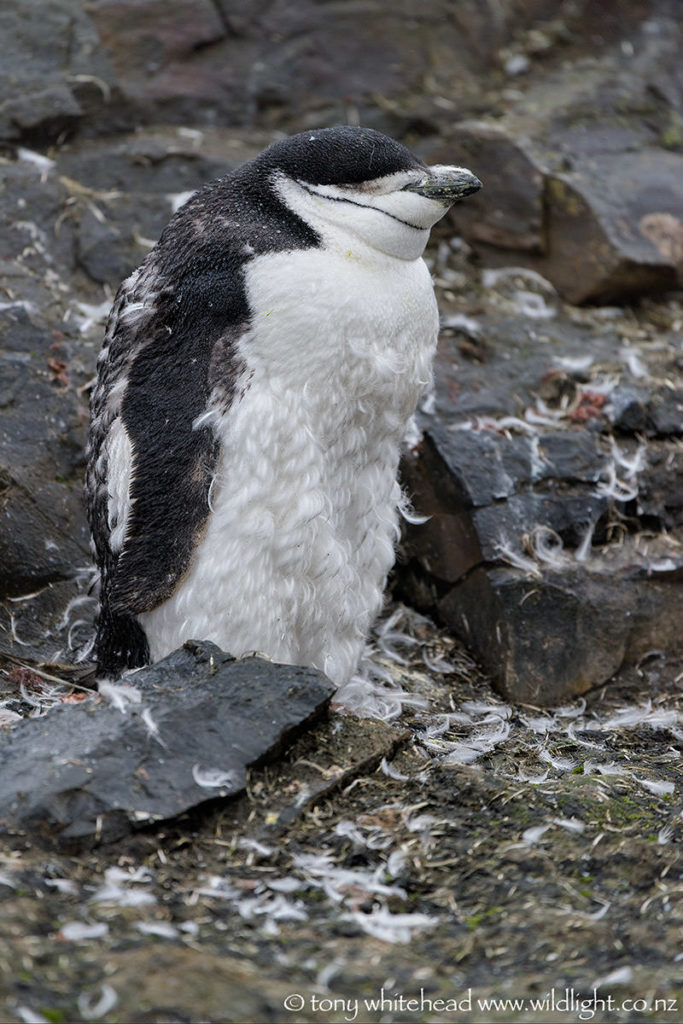
For more information on Eastern Rockhopper Penguins see NZBirdsOnline which features a couple of my photos of this species.
Photos with Nikon D810 and Nikon AFS 80-400mm lens, except Chinstrap photo with Nikon 200-400mm lens.
